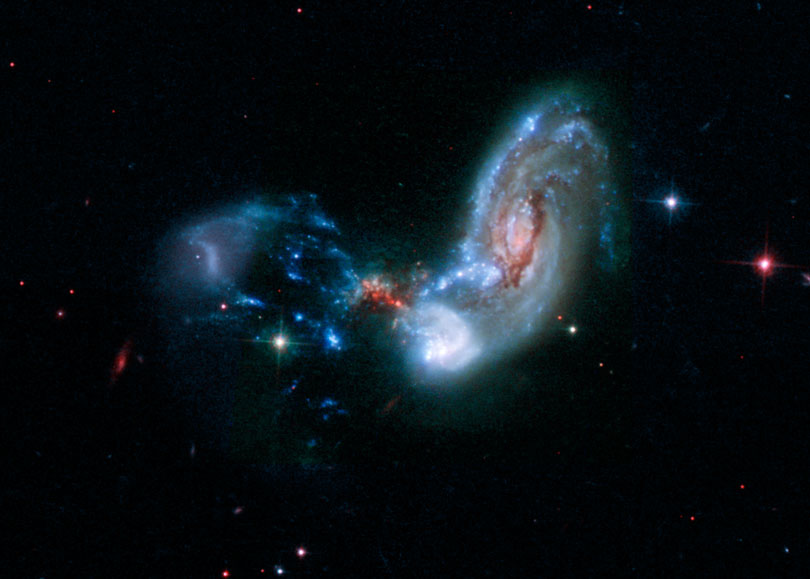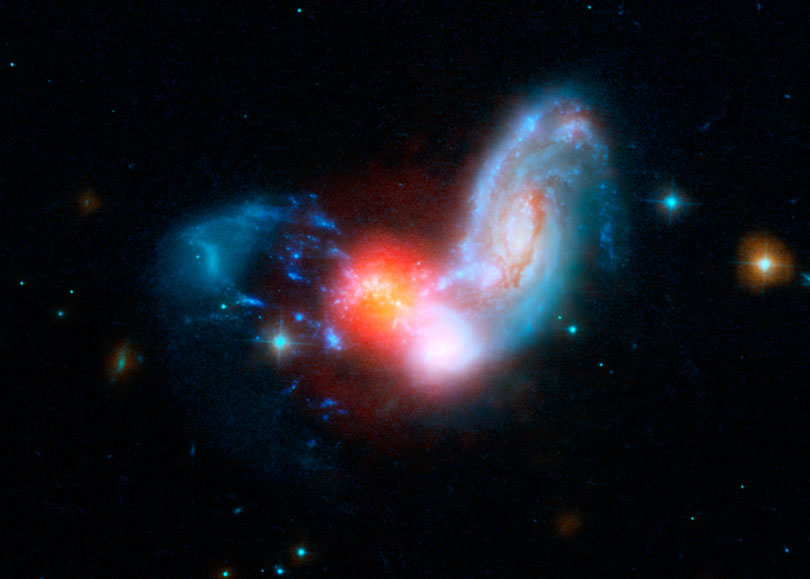- GALAXIES
- INFRARED WORLD
- INTERACTING GALAXIES
- MILKY WAY
- STAR BIRTH
- STAR DEATH
- GALAXIES
- INFRARED WORLD
- INTERACTING GALAXIES
- MILKY WAY
- STAR BIRTH
- STAR DEATH
Interacting Galaxies
Merging Galaxies II ZW 096


Visible:
Default View
Infrared:
LESS
MORE
Merging Galaxies II ZW 096
When spiral galaxies interact and merge, the process disrupts vast stores of gas. As these gas clouds collide, they clump together and become very dense. This triggers a burst of star formation that churns out baby stars at unprecedented rates. Most of this starburst activity is hidden deep inside dust clouds that form in these dense areas. As the dust blocks the visible light from the hot, young stars, it warms up and glows brightly in the infrared. Adding an infrared layer into the image of this merger shows the starburst l ike a shining red beacon.
Visible:
The merging galaxies are furiously forming stars inside a dark cocoon of dust.
Infrared:
Including infrared light (in red) dramatically reveals where stars are forming.
CREDITS:
Visible: NASA/JPL-Caltech/H. Inami (SSC/Caltech). Infrared: NASA/JPL-Caltech/STScI/H. Inami (SSC/Caltech).